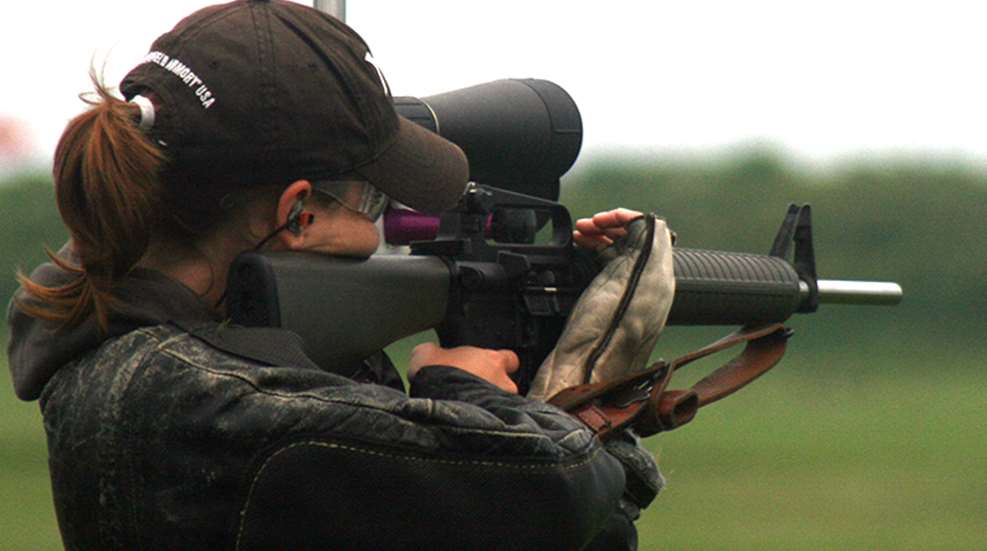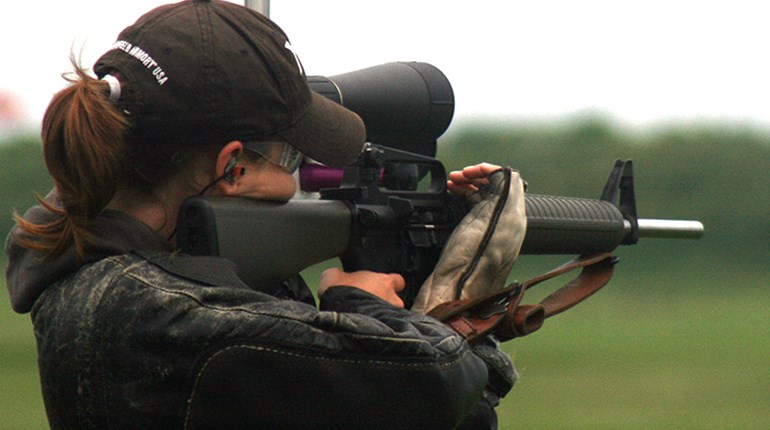
In the late 1980s, gun control groups realized that they had failed in their original goal-getting handguns banned-and began campaigning against semi-automatic firearms they called "assault weapons," most of which are rifles. As an anti-gun activist group put it:
[A]ssault weapons [will] strengthen the handgun restriction lobby for the following reasons: It will be a new topic in what has become to the press and public an "old" debate. . . . [H]andgun restriction consistently remains a non-issue with the vast majority of legislators, the press, and public. . . . Efforts to restrict assault weapons are more likely to succeed than those to restrict handguns. . . . Although the opportunity to restrict assault weapons exists, a question remains for the handgun restriction movement: How?"2
Gun control supporters demanding a ban on "assault weapons" have also demanded a ban on ammunition magazines that hold more than 10 rounds, most of which are designed for self-defense handguns. These gun and magazine bans should be rejected because:
Reason #1: Semi-automatic firearms are not fully-automatic military machine guns. Gun control supporters say that semi-automatic rifles like the AR-15 are "military-style assault weapons" designed for "war" on "the battlefield." To the contrary, the military uses fully-automatic rifles, which are regulated as "machineguns" by the National Firearms Act of 1934. The difference is that a fully-automatic firearm can fire repeatedly and quickly as long as you hold down the trigger, but a semi-automatic, like any firearm other than a fully-automatic, fires only once when you pull the trigger.
Reason #2: Semi-automatic firearms are not "more powerful" than other guns. Gun control supporters call "assault weapons" (and all other firearms, for that matter) "high-powered." However, a firearm's power is determined by the caliber or gauge of its ammunition, semi-automatic rifles and shotguns use the same ammunition as many other rifles and shotguns, and semi-automatic handguns use ammunition comparable to revolver ammunition. So-called "assault weapons" are much less powerful than many rifles used to hunt deer and other large game.
Reason #3: As the numbers of "assault weapons" and "large" magazines have soared to all-time highs, violent crime has been cut in half. The nation's total violent crime rate peaked in 1991. Since then, through 2012, it has decreased 49%, to a 42-year low, including a 52% drop in the nation's murder rate, to a 49-year low-perhaps the lowest point in American history.3 Meanwhile, the number of the most popular firearm that gun control supporters call an "assault weapon"-the AR-15 semi-automatic rifle-has risen by over 4.5 million, the number of all semi-automatic firearms has risen by over 50 million, and the total number of privately-owned firearms has risen by over 130 million.4 The number of new magazines that hold more than 10 rounds has risen by many tens of millions.5
Reason #4: So-called "assault weapons" have never been used in more than a small percentage of firearm-related violent crime. The study that Congress required of the federal "assault weapon" and "large" magazine ban of 1994-2004 concluded that "the banned weapons and magazines were never used in more than a modest fraction of all gun murders" even before the ban, and that the law's 10-round limit on new ammunition magazines wasn't a factor in multiple-victim or multiple-wound crimes.6 A follow-up study found "gunshot injury incidents involving pistols (which use magazines) were less likely to produce a death than were those involving revolvers" (which don't use magazines), and "the average number of wounds for pistol victims was actually lower than that for revolver victims."7 Police reports and felon surveys have found that "assault weapons" are used in only 1%-2% of violent crimes.8 The vast majority of firearms that gun control supporters call "assault weapons" are rifles, and during the most recent five years of data, there were nine times as many murders with knives, blunt objects (hammers, clubs, etc.), and "personal weapons" (hands, feet, etc.), as with rifles of any type.9
Reason #5: "Assault weapon" and "large" magazine bans have not reduced crime. After its 1989 ban, California's murder rate increased every year for five years, 26% overall. California banned more guns in January 2000 (and thereafter imposed a variety of other gun control restrictions) and murder has since averaged 12% higher than the national rate.10 The Bureau of Alcohol, Tobacco, Firearms and Explosives says it can "in no way vouch for the validity"11 of Brady Campaign's claim12 –repeated by "assault weapon" ban campaigner Sen. Diane Feinstein (D-Calif.)13-that the federal "assault weapon" law reduced crime. (Brady mischaracterized BATFE's firearm chain-of-commerce traces, which the Congressional Research Service says "are not accurate indicators" of criminal gun use.14 Most guns that are traced have not been used to commit violent crimes, and most guns used to commit violent crimes are never traced.15) Even the radical anti-gun group, Violence Policy Center, said "You can't argue with a straight face that the ban has been effective."16 The FBI does not list guns or "gun control" as a "crime factor" and California doesn't credit its "assault weapon" ban for the state's recent decrease in crime.17 Studies for the CDC, the National Academy of Sciences, and the Library of Congress have found no evidence that "gun control" reduces crime.18
For the full article from NRA-ILA and five more reasons, visit NRAILA.org.
Notes:1. The National Coalition to Ban Handguns (NCBH), the purpose of which was evident in the name, and the National Council to Control Handguns, which openly stated that it wanted all handguns registered in order to make confiscation possible, were formed in 1974. (Respectively, they are now known as the Coalition to Stop Gun Violence and the Brady Campaign to Prevent Gun Violence.) Another anti-gun group, the Violence Policy Center, was formed in 1988 as the New Right Watch by a former communications director of the NCBH who still openly advocates banning handguns. Handgun prohibition advocates became disillusioned in the 1980s due to several factors. Handgun ban referenda had been overwhelmingly defeated in Massachusetts in 1976 and California in 1982. In 1982, Congress repealed the 1968 Gun Control Act's requirement that buyers of .22 rimfire ammunition sign ledgers. In 1986, Congress enacted the NRA-supported Firearms Owners' Protection Act, which, among other things, eliminated the ledger-signing requirement relative to all other handgun ammunition. Congress had rejected legislation intended to prohibit most handguns and most ammunition. The Right-to-Carry (a handgun, for protection) movement had begun at the state level, with the landmark enactment of a "shall issue" carry permit law in Florida.2. Violence Policy Center, "Assault Weapons and Accessories in America," 1988.3. FBI Uniform Crime Reports, Crime in the United States, annual reports and UCR data tool. The most recent year of data is 2012. See also Manuel Eisner, "Long Term Historical Trends of Violent Crime, University of Chicago, 2001.4. BATFE, Annual Firearms Manufacturer and Export Reports and Firearms Commerce in the United States, Annual Statistical Update 2014.5. The number rose by 50 million between 1994-2004 alone, according to the federal "large" magazine ban's sponsor in the House of Representatives. (Sen. Charles Schumer, D-N.Y., press release, "Schumer Moves to Renew Federal Ban on Assault Weapons," May 8, 2003. Schumer was a U.S. Representative in 1994.) Also, Americans buy between 4-5 million new semi-automatic handguns annually, and most of them are designed to use magazines that hold more than 10 rounds. (Note 4, BATFE, firearm manufacturer reports.)6. Roth, Koper, et al., Impact Evaluation of the Public Safety and Recreational Firearms Use Protection Act of 1994, Urban Institute, March 13, 1997.7. Reedy and Koper, Impact of handgun types on gun assault outcomes: a comparison of gun assaults involving semiautomatic pistols and revolvers, Injury Prevention, 2003.8. Gary Kleck, Targeting Guns, 1997; Dave Kopel, Rational Basis Analysis for ‘Assault Weapon' Prohibition; Bureau of Justice Statistics, Survey of State Prison Inmates 1991, (3/93); Guns Used in Crime, (7/95); Firearm Use by Offenders, (11/01), Pennsylvania State Police, Bureau of Laboratory and Communication Services, Ballistics Section, Weapons Database Report covering Jan. 1, 1989 to May 20, 1994.9. FBI, Crime in the United States 2012, Expanded Homicide Table 8.10. Note 3, FBI.11. Torsten Ove, "Assault weapon ban's effectiveness debated," Pittsburgh Post-Gazette, 3/26/04.12. Brady Campaign, "On Target," March 2004.13. Sen. Dianne Feinstein website, Stopping the spread of deadly assault weapons, Dec. 2012. Feinstein also misrepresents the finding of the congressionally-mandated study of the federal "assault weapon" and "large" magazine ban, claiming that it found a 6.7% reduction in gun murders after the ban. This is what the study actually said: "At best, the assault weapons ban can have only a limited effect on total gun murders, because the banned weapons and magazines were never involved in more than a modest fraction of all gun murders. Our best estimate is that the ban contributed to a 6.7 percent decrease in total gun murders between 1994 and 1995, beyond what would have been expected in view of ongoing crime, demographic, and economic trends. However, with only one year of post-ban data, we cannot rule out the possibility that this decrease reflects chance year-to-year variation rather than a true effect of the ban. Nor can we rule out effects of other features of the 1994 Crime Act or a host of state and local initiatives that took place simultaneously."14. Report for Congress: "Assault Weapons": Military-Style Semi-Automatic Firearms Facts and Issues, 5/13/92.15. See BATFE, Firearms Trace Data, second page of any state-specific document, "ATF Firearms Trace Data Disclaimer," available by clicking here.16. Rick Montgomery, "Clock ticking on assault gun ban," Kansas City Star, May 2, 2004.17. FBI, Crime in the United States, 2012, Variables Affecting Crime. Leonard A. Marowitz, Why Did the Crime Rate Decrease Through 1999?, California Criminal Justice Statistics Center, California Department of Justice, December 2000. The link is to the report's summary, which contains links to the entire report's sections.18. CDC, First Reports Evaluating the Effectiveness of Strategies for Preventing Violence: Firearms Laws, Oct. 3, 2003; National Academy of Sciences, Firearms and Violence: A Critical Review, 2004; Library of Congress, "Firearms Regulations in Various Foreign Countries," May 1998.




































